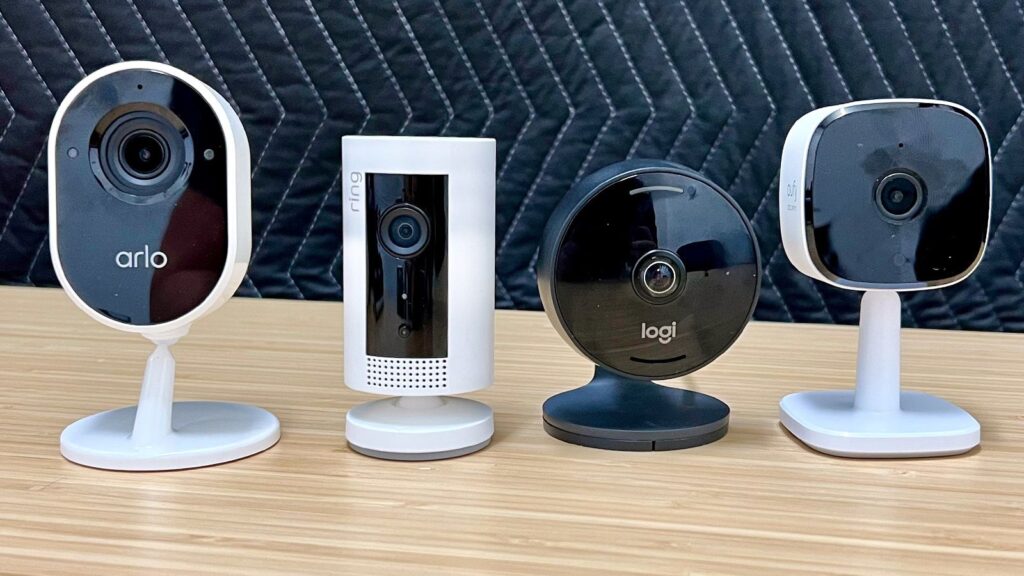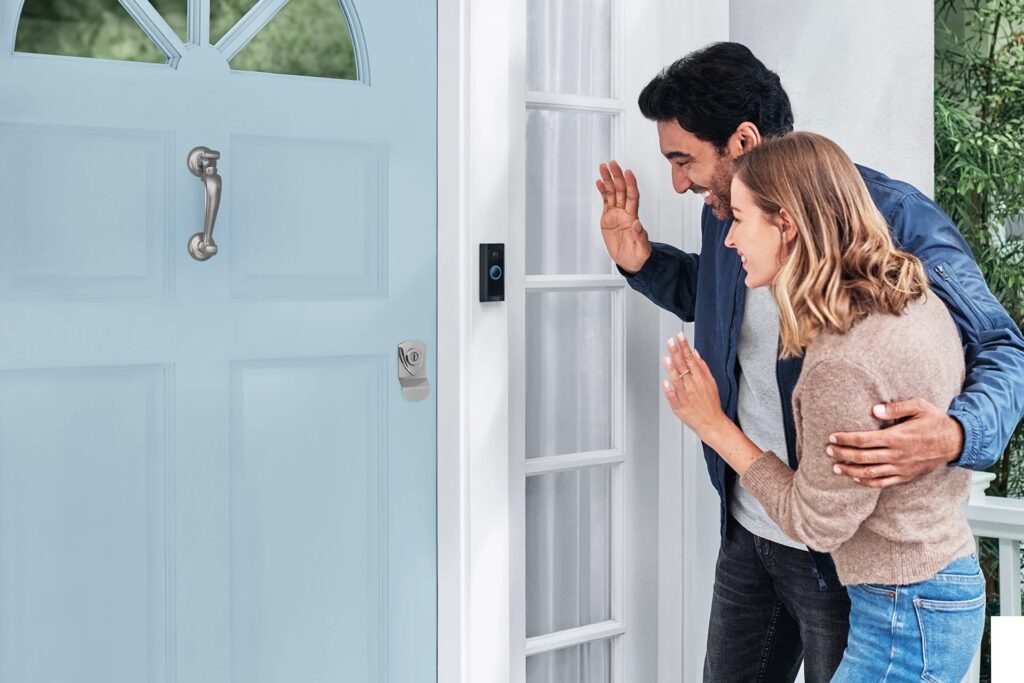In today’s digitally connected world, ensuring the safety of our homes has never been more paramount. Among the plethora of security gadgets available, the WiFi panorama camera stands out for its expansive coverage and ease of setup. This guide aims to walk you through the intricacies of the wifi panorama camera setup while highlighting its numerous benefits and features.
Step-by-Step: Setting Up Your WiFi Panorama Camera
- Unboxing and Preparing: First and foremost, unpack your camera and make sure you have all the necessary components. This typically includes the camera itself, a power adapter, mounting tools, and setup instructions.
- Choose a Location: Deciding where to place your camera is crucial. For a panoramic view, high and central locations often work best.
- Power it up: Connect the power adapter and switch on the camera. Most cameras will have a small LED light indicating they are active.
- Connect to WiFi: Download the camera’s dedicated app on your smartphone or tablet. From there, follow the app’s instructions to connect the camera to your home’s WiFi network.
- Calibrate and Adjust: Using the app, calibrate the camera’s view. Make sure it covers the desired area and adjust the settings accordingly.
- Test: Finally, conduct a few tests. Check the live feed, set off a motion alert, or try the two-way audio if your camera has that feature.
Troubleshooting Common Issues in WiFi Panorama Camera Setup
While the wifi panorama camera setup process is designed to be smooth, occasionally, you might encounter a hiccup. Here are solutions to some common problems:
- Connectivity Issues: Ensure the camera is within your WiFi range. Consider using WiFi extenders if necessary. Additionally, verify the correct WiFi password has been entered.
- Blurry or Distorted Images: Clean the camera lens and ensure there’s no physical obstruction. Also, verify the resolution settings in the app.
- No Alerts or Notifications: Cross-check the app settings to make sure alerts are turned on. Also, ensure your phone’s notifications for the app are enabled.
Benefits of Choosing a WiFi Panorama Camera for Your Security Needs
Security is undoubtedly the primary concern, but there’s more to these cameras than just surveillance. Some benefits include:
- Expansive Coverage: With the panoramic feature, you can monitor larger areas without needing multiple cameras.
- Easy Access: Being WiFi-enabled, you can remotely view the camera feed from anywhere using your smartphone or tablet.
- Integration with Smart Systems: Many of these cameras easily integrate with home automation systems, enhancing convenience.
Top Features to Look for When Buying a WiFi Panorama Camera
If you’re in the market for one, consider these essential features:
- Resolution: A high-definition (HD) camera ensures clearer images.
- Motion Detection: This feature sends alerts whenever there’s movement in the camera’s vicinity.
- Night Vision: For clear images even in low light conditions.
- Two-Way Audio: Allows you to communicate through the camera, which can be useful for deterrence.
Beginner’s Guide: Simplifying Your WiFi Panorama Camera Setup
For those new to this, the wifi panorama camera setup may seem daunting. But, by following the provided instructions meticulously and seeking assistance when in doubt, the process can be made considerably simpler. Moreover, many manufacturers now offer 24/7 support for their products, ensuring that help is always at hand.
Securing Your Home with a WiFi Panorama Camera: Setup Tips and Tricks
Firstly, the appeal of a WiFi panorama camera lies in its ability to offer a comprehensive view of its surroundings, often up to 360 degrees. For the setup process, follow these steps:
- Positioning: Place your camera at a central location to utilize its panoramic feature fully.
- WiFi Connectivity: Ensure a strong, stable connection. Often, this requires setting up the camera within a good range of your router.
- Mobile App Integration: Most of these cameras come with dedicated apps. Download yours and follow in-app instructions to synchronize your camera.
- Test the View: Before finalizing the setup, do a live view test to make sure there are no blind spots.
Comparing Wired vs. WiFi Panorama Cameras: Which Is Better?
Transitioning into a comparison, wired cameras have been the go-to for many years. They are reliable and offer high-quality video, but they come with the hassle of managing cords, professional installation, and potential drilling.
On the other hand, the WiFi panorama camera setup is generally more straightforward, offering flexibility in placement and easier relocation if necessary. Furthermore, they integrate better with smart home systems, allowing seamless control via smartphones or tablets.
Essential Tools and Apps for Your WiFi Panorama Camera Setup
Delving into the tools, most of the necessary equipment comes in the box with your camera: mounting tools, power adapters, and sometimes ethernet cables for optional wired setup.
However, the magic often lies in the dedicated apps. They offer:
- Live streaming
- Playback features
- Alert settings
- Integration with other smart devices
It’s crucial to keep these apps updated to enjoy the latest features and security patches.
Maximizing Coverage: Best Locations for Your WiFi Panorama Camera Setup
To reap the full benefits of your camera, location is key. Ideally, place it in high-traffic areas. Living rooms, main hallways, or the central point of open-plan homes often work best. For multi-story houses, having a camera on each floor ensures comprehensive coverage. Remember, the goal is minimal blind spots.
Understanding the Tech Behind WiFi Panorama Cameras
Lastly, it’s beneficial to understand the underlying technology. These cameras typically utilize fisheye lenses to capture wide areas. The WiFi component enables wireless data transfer, and the data is often stored either on an internal SD card or a cloud storage solution, depending on the model.
Achieving the Perfect Angle: Positioning Tips for Your WiFi Panorama Camera
Setting up a home security camera is only part of the battle; positioning it correctly is equally vital to ensure you capture the right areas of your property. The WiFi panorama camera setup offers an extensive field of view, but to make the most of its capabilities, it’s essential to consider some positioning tips.
Firstly, height is key. Setting the camera too high might miss out on specific details, like facial features. Conversely, too low, and it might be accessible to tampering. Ideally, place it at a height where it can capture the entire room or area, but is still out of arm’s reach.
Next, avoid pointing the camera directly at light sources, such as windows or lamps. This can cause glare or overexposure. Instead, angle it slightly downward or away from the light for a clearer view.
Integrating Your WiFi Panorama Camera with Smart Home Systems
The future of home security lies in the integration of various devices. Once you’ve perfected your WiFi panorama camera setup, the next logical step is to incorporate it into your smart home system. This not only streamlines your home’s safety but also maximizes convenience.
Most modern WiFi panorama cameras are compatible with popular smart home platforms like Google Home, Amazon Alexa, or Apple HomeKit. Linking them allows you to control the camera using voice commands. Additionally, integration can facilitate actions like turning on the lights when the camera detects movement.
Before diving in, it’s essential to check the compatibility of your devices. Read user manuals, or explore online forums for guidance. Now, for those who want to push the boundaries of their setup, we have some advanced techniques.
Advanced Setup Techniques for the Pro WiFi Panorama Camera User
While basic setup might suffice for most users, home security enthusiasts can employ advanced techniques to elevate their WiFi panorama camera setup.
One such method is zone detection. Rather than receiving notifications for any movement, zone detection allows you to specify areas of interest. For instance, you might want alerts only if someone approaches your front door, but not when a car passes by on the street.
Another pro technique is utilizing AI capabilities, if supported by your camera. Some WiFi panorama cameras come equipped with artificial intelligence to distinguish between types of movement, like recognizing the difference between humans, animals, and vehicles.
Lastly, consider linking multiple cameras. If you have a larger property or multiple areas of interest, connecting several cameras can provide a comprehensive view of your surroundings, all accessible from a single interface.
Final Thoughts
In the evolving landscape of home security, the WiFi panorama camera setup stands out for its extensive coverage and integration capabilities. Proper positioning ensures you capture crucial details, while advanced techniques and smart home integration elevate your security measures. Remember, the goal isn’t just to install a camera but to create a holistic, effective, and efficient security system for your home.


